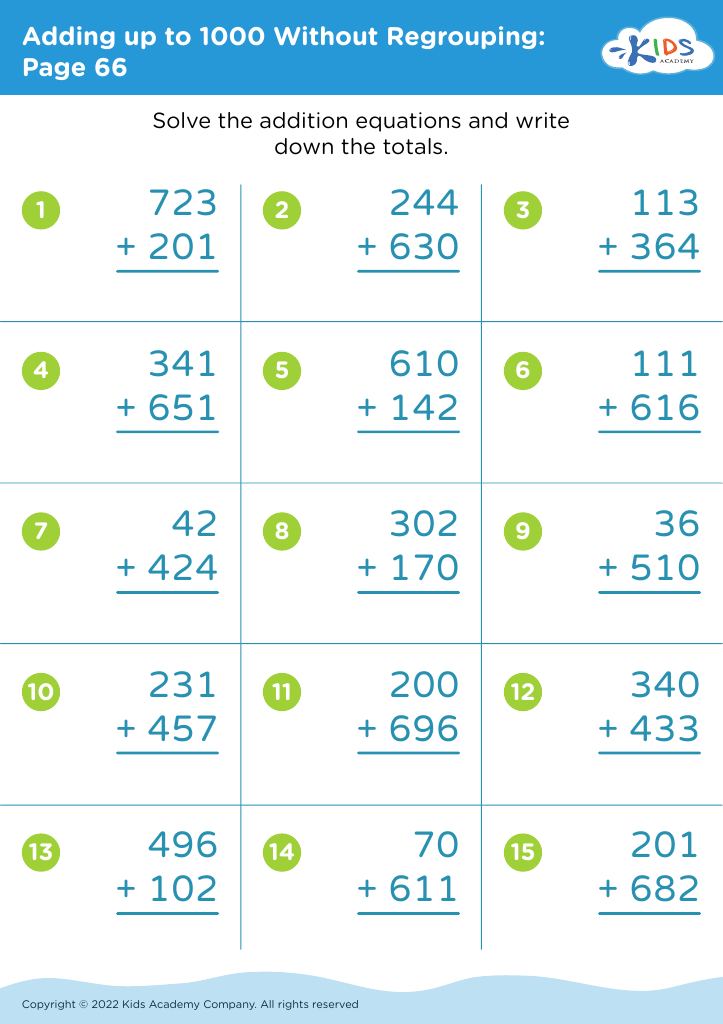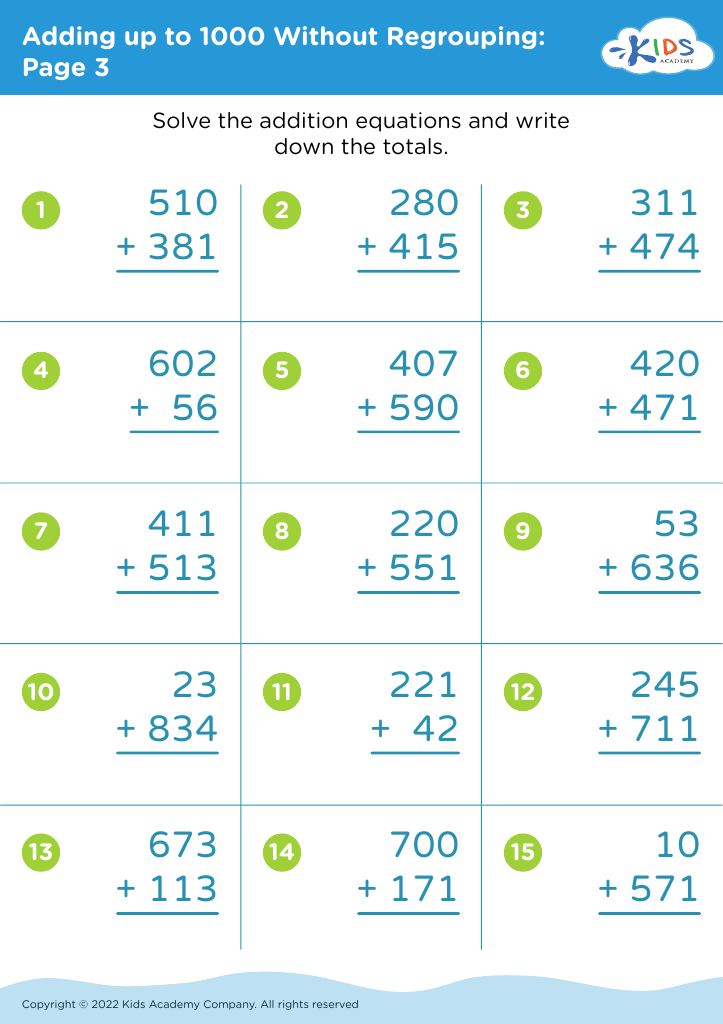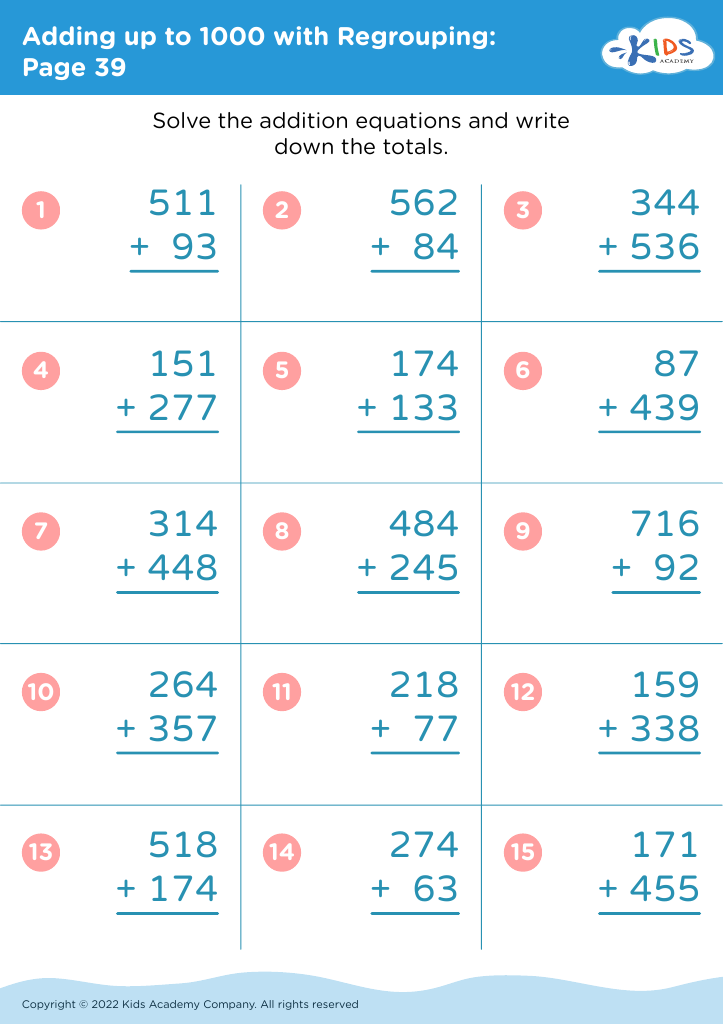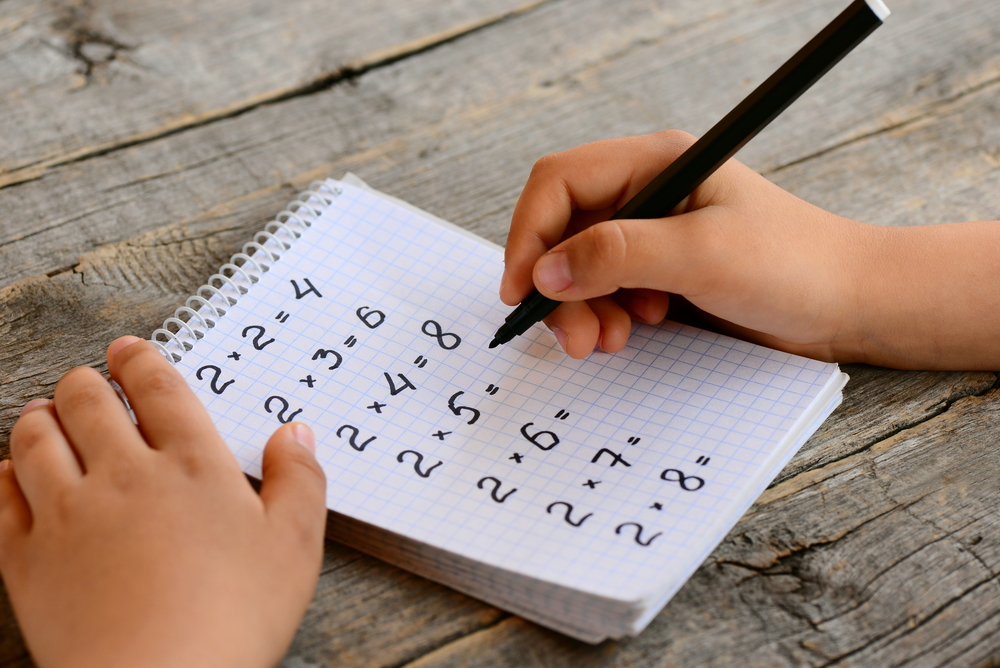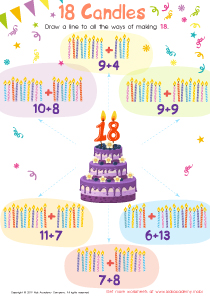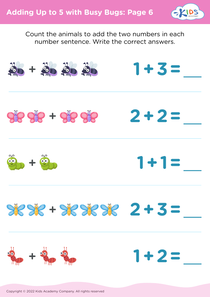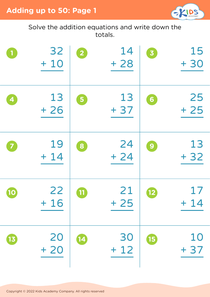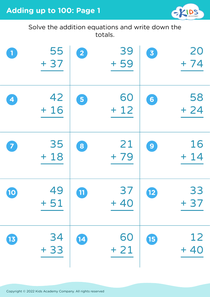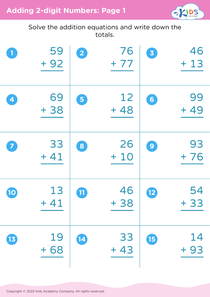Recognize shapes Adding up to 1000 Worksheets for Ages 5-9
4 filtered results
-
From - To
Discover our “Recognize Shapes Adding Up to 1000 Worksheets” designed for children ages 5-9! These engaging worksheets provide a fun and interactive way for young learners to explore shapes while practicing addition skills up to 1000. Each worksheet features colorful illustrations and step-by-step tasks that encourage kids to identify and categorize various shapes, all while reinforcing their mathematical abilities. Perfect for home or classroom use, these printable worksheets help build a solid foundation in geometry and arithmetic. Ignite your child's interest in shapes and numbers with our carefully crafted activities that make learning enjoyable and effective! Print them out today!
Recognizing shapes and understanding the concept of numbers adding up to 1,000 are foundational skills that directly impact children's cognitive development, problem-solving abilities, and mathematical reasoning. For children ages 5-9, early exposure to shape recognition fosters spatial awareness and geometric understanding, which are crucial for later subjects such as geometry and engineering. When parents and teachers emphasize these skills, children become more adept at identifying and categorizing objects in their environment, enhancing their observational skills and creativity.
Similarly, grasping how numbers can total 1,000 lays the groundwork for more advanced arithmetic. It teaches children about place value, the number system's structure, and essential addition and subtraction concepts. Mastery in this area builds confidence and gives them tools for tackling more complex math problems as they progress academically.
Moreover, integrating shape recognition with numeric values enhances learning by making it more interactive, enjoyable, and relevant. When children see the connection between shapes and numbers, they can better appreciate mathematics' broad applicability in real life. By prioritizing these skills, parents and teachers can set children on a path toward greater academic success and help them develop a lifelong appreciation for math and shapes.

